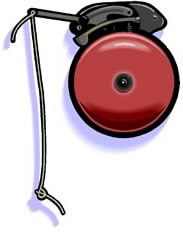
by Michael Strogoff, AIA
Negotiating Strategies
Publisher
 One
of the most basic principles of negotiating is to attack the problem,
not the person. But not everyone learns how to negotiate this way. Without
the knowledge or skills to negotiate collaboratively, some people resort
to aggressive tactics. Others deliberately employ tactics that most people
consider off limits. Examples of aggressive tactics include:
One
of the most basic principles of negotiating is to attack the problem,
not the person. But not everyone learns how to negotiate this way. Without
the knowledge or skills to negotiate collaboratively, some people resort
to aggressive tactics. Others deliberately employ tactics that most people
consider off limits. Examples of aggressive tactics include:
• Bullying
 •
Using threats and ultimatums
•
Using threats and ultimatums
• Playing good cop/bad cop
• Using misleading information
• Withholding key information
• Insulting the other person
• Presenting take-it-or-leave-it offers
• Presenting unreasonable offers
• Employing emotional outbursts
• Negotiating in bad faith.
 How
does one maintain composure when facing a person who uses aggressive negotiating
tactics? When is it appropriate to fight fire with fire?
How
does one maintain composure when facing a person who uses aggressive negotiating
tactics? When is it appropriate to fight fire with fire?
As a general rule, do not respond in kind unless the other party proves to be so unreasonable, unethical, or dysfunctional that hardball responses are the only way of achieving your objectives. But beware. Unless the project or issue at hand is of vital importance, you may be better off not reaching an agreement. How a person behaves during a negotiation usually indicates how they will act throughout a relationship. Do you really want to do business with someone so unreasonable that, to protect your interests, you need to stoop to their level?
 For
design professionals, effectively managing a negotiation can mean the
difference between profitability and jeopardizing one's livelihood, between
accepting reasonable versus onerous terms, and between establishing a
productive relationship or an adversarial one. When negotiating with an
aggressive person, try the following:
For
design professionals, effectively managing a negotiation can mean the
difference between profitability and jeopardizing one's livelihood, between
accepting reasonable versus onerous terms, and between establishing a
productive relationship or an adversarial one. When negotiating with an
aggressive person, try the following:
1. Recognize the
game. Once you understand that your opponent's behavior is simply
a tactic, you can respond coolly and effectively rather than reactively
and emotionally.
 2.
Detach yourself. Even if the other party insults you or attacks
your integrity, don't take it personally. He or she probably has little
regard for most people in his or her life—you're no different. Maintain
your composure. Keep telling yourself that this behavior is a reflection
on the other person, not you.
2.
Detach yourself. Even if the other party insults you or attacks
your integrity, don't take it personally. He or she probably has little
regard for most people in his or her life—you're no different. Maintain
your composure. Keep telling yourself that this behavior is a reflection
on the other person, not you.
3. Ignore the tactics. When tactics
don't bring desired results, people eventually change their behavior.
Only respond when behavior is acceptable. Otherwise, move on to the next
topic. Spend your energy crafting solutions that satisfy all parties.
4. Befriend the aggressive person.
Emphasize what you have in common. Agree with the aggressor whenever possible.
Compliment whatever he or she achieved to date during the negotiation.
 5.
Discuss the negotiating process. Point out that the larger goal
of reaching agreement is at stake. Suggest that the negotiations resume
based on trust and respect. Consider bringing in other people to help
the process get back on track.
5.
Discuss the negotiating process. Point out that the larger goal
of reaching agreement is at stake. Suggest that the negotiations resume
based on trust and respect. Consider bringing in other people to help
the process get back on track.
6. Concede on an item. It never
hurts to appease someone now and then. Choose an issue that has little
significance to your firm but is of great importance to the other side.
See if the concession leads to a spirit of cooperation.
This article was excerpted from the March issue of Negotiating Strategies, a monthly newsletter about negotiating better agreements, written specifically for the architecture and engineering professions.
To view a sample newsletter or subscribe, visit the publisher's Web site, call 866 ARCH ENG (866 272-4364), or send an email.
Copyright 2002 The American Institute of Architects. All rights reserved.
![]()
|
Author Michael Strogoff also offer two distance learning programs
via AIA eClassroom: For a complete list of AIA eClassroom distance learning programs, click here. Got a BEST PRACTICES tip on any subject that you'd like to share with your peers via AIArchitect This Week? Send an email to Managing Editor Stephanie Stubbs and tell her what it's about. We'll get in touch—we'll even write it for you! |
|